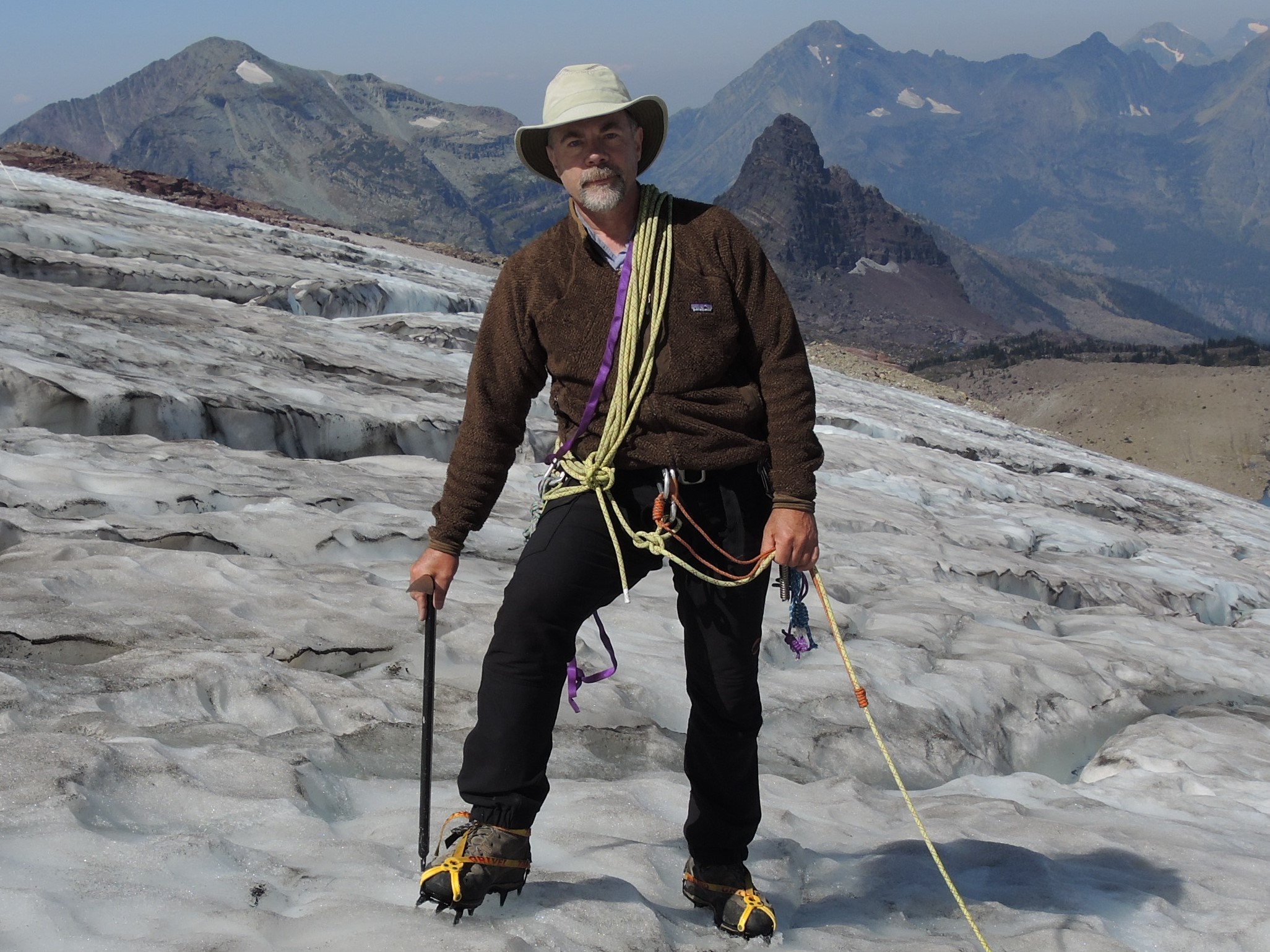Glacier Park Scientist Talks Climate Change in Mountain Ecosystems
 Over his 29 years working in Glacier National Park, U.S. Geological Survey (USGS) research ecologist Dan Fagre has seen a lot of changes. Even as the pressures of climate change encroach upon this mountain region, Fagre and other scientists see boundless opportunities for research and education.
Over his 29 years working in Glacier National Park, U.S. Geological Survey (USGS) research ecologist Dan Fagre has seen a lot of changes. Even as the pressures of climate change encroach upon this mountain region, Fagre and other scientists see boundless opportunities for research and education.
Fagre and other members of the USGS Climate Change and Mountain Ecosystems (CCME) Program focus on alpine climatology, snowpack, snow avalanches, alpine vegetation, and glaciers for most of their research. While some of these phenomena are not considered strictly ecological, Fagre said that the way the team studies them definitely is.
“For instance, when we look at snow avalanches, we not only look at them from the typical physical science perspective, but we look at their impacts on mountain ecosystems,” Fagre said. “We’re very interested in the fact that they are a disturbance agent in the mountain system. A certain amount of disturbance is necessary to maintain what we have, but if you get excess disturbance, then it can be destructive. Analogies to forest fires come to mind.”
Depending on the type of project, the CCME research team consists of 6-8 people with a wide range of scientific expertise between them. All of them have a deep passion for the mountains—even spending their days off on them, skiing and hiking when they can.
The mountains are what drew Fagre to Montana in the first place. Born in Minnesota, he moved around frequently as a child and even spent nine years living in Tokyo, Japan. He went to college in Arizona and spent time climbing in Mexico, California, and Colorado. He came to Montana in 1991, and has worked for the USGS in Glacier National Park ever since. He anticipates retiring in 2020, but says he still has projects to finish up—“which is always the case with scientists,” he said. “That last paper.” In this case: a chapter on mountain glaciers for a climate change textbook, and an alpine vegetation change study.
As Fagre looks to retire within the next year, he expects PhD student and avalanche expert Erich Peitzsch to take over for him. Peitzsch is currently the vice president of the American Avalanche Association.
CCME is hands-on: on a given day, data collection might include skiing into a key location, digging a snow pit, and using a thermometer to measure the snow temperature profile from the ground up to the surface. The size and type of snow crystals present are also recorded. In combination, these factors can indicate which areas are more likely to release a snow avalanche.
Most of the CCME’s work has been above the treeline; in recent years, the team has started using drones to map avalanche zones where it’s too dangerous for researchers to ski.
For years, CCME has worked closely with the staff of Glacier National Park, Fagre said. “We’ve taken part in many initiatives over time, many through the Crown of the Continent Research and Learning Center.”
Within the park, CCME works with snowplow operators in the spring, trains park interpreters, conducts avalanche safety trainings, and communicates scientific research to park employees to share with park visitors and the general public.
The work of Fagre and his colleagues on avalanche forecasting is also tied to regional economics. “Tourists just don’t come to the park in the spring until Going to the Sun Road’s open and forecasting helps to safely open the road,” he said. “So you have that as a socioeconomic component, and you have the very same thing, snow avalanches, being instrumental at a mountain ecosystem scale…We try to do science that is relevant to the long-term management of the park.”
By Jackie Bussjaeger
This is Montana Editor
Photo: USGS scientist Dan Fagre on the job at Glacier National Park. Photo courtesy of Dan Fagre.
